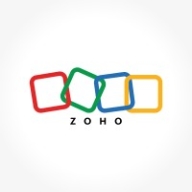

Zarafa and Zoho Mail compete in the email and collaboration market. Zoho Mail often has the upper hand due to its extensive integrations, cloud-based solutions, and comprehensive feature set despite higher costs.
Features: Zarafa provides seamless integration with Outlook, a flexible open-source architecture, and customizable options appealing to tech-savvy users. Zoho Mail offers extensive integrations with both Zoho applications and third-party services, cloud functionality, and a cohesive productivity suite attractive to businesses.
Ease of Deployment and Customer Service: Zarafa's self-hosted deployment requires technical expertise, making it suitable for businesses with strong IT infrastructures. Zoho Mail's cloud-based deployment is simpler and faster, paired with accessible customer service, beneficial for quick setup needs.
Pricing and ROI: Zarafa may provide potential cost savings through its open-source model but involves higher IT management expenses. Zoho Mail is subscription-based, with costs justified by its wide range of features and integrations that enhance productivity. Despite Zarafa's initial cost advantages, Zoho Mail's overall ROI is considered favorable due to its functionality and ease of use.
| Product | Market Share (%) |
|---|---|
| Zoho Mail | 5.5% |
| Zarafa | 0.5% |
| Other | 94.0% |

| Company Size | Count |
|---|---|
| Small Business | 11 |
| Midsize Enterprise | 1 |
| Large Enterprise | 3 |
We monitor all Email Applications reviews to prevent fraudulent reviews and keep review quality high. We do not post reviews by company employees or direct competitors. We validate each review for authenticity via cross-reference with LinkedIn, and personal follow-up with the reviewer when necessary.